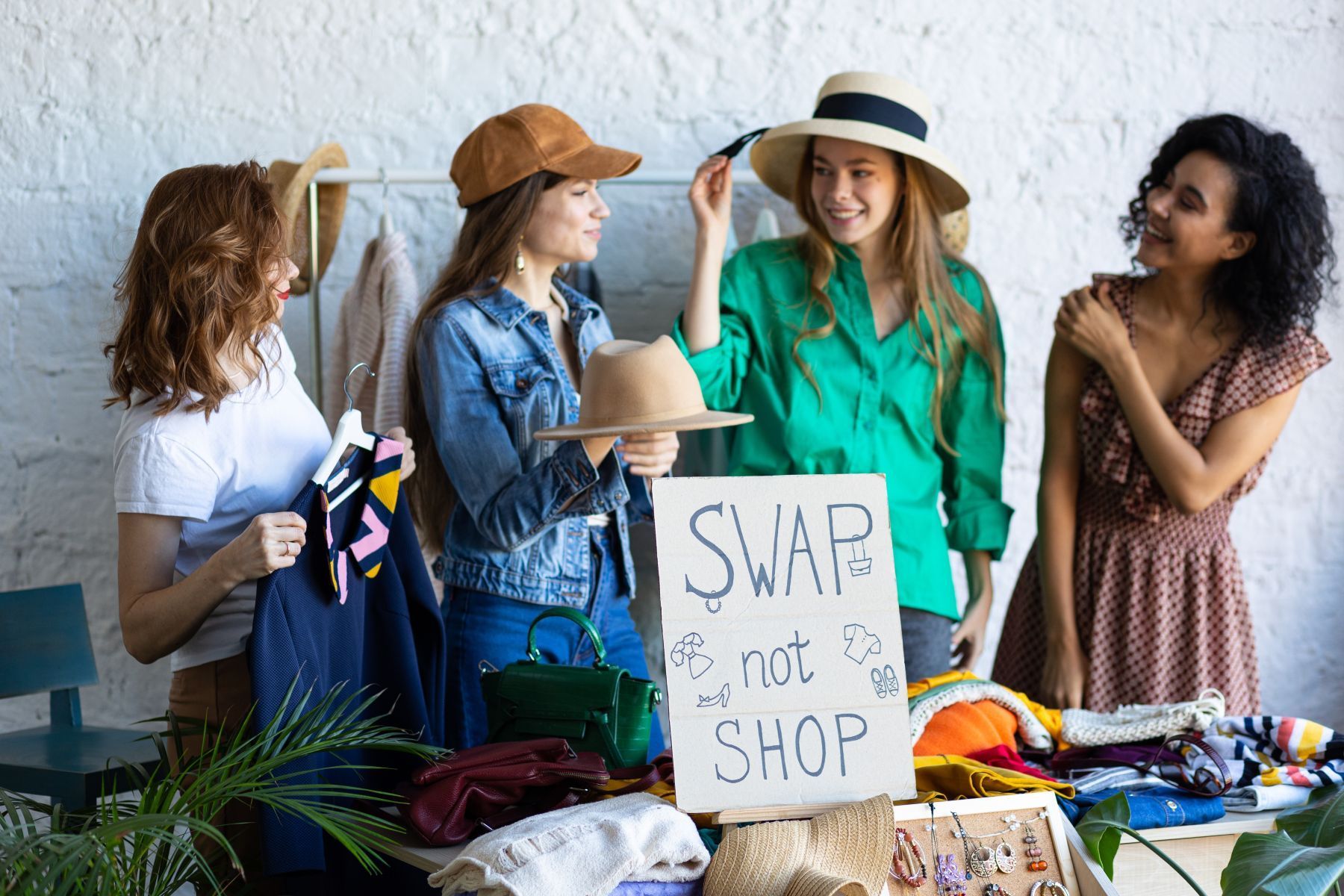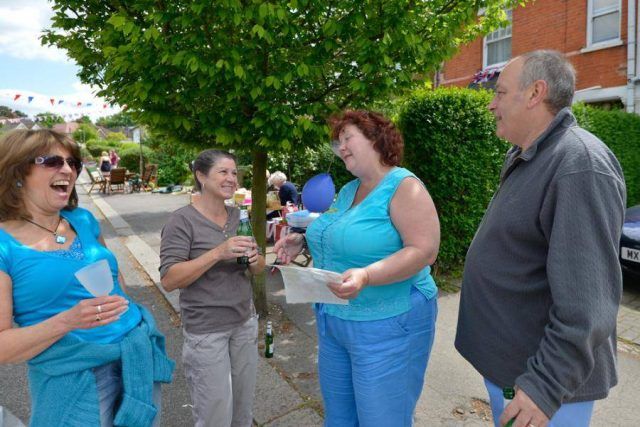How to hold a clothes swap
Clothes swaps are perfect for bringing people together, reducing waste and promoting sustainable fashion!

Join the re-wear revolution! A clothes-swapping event is a fun, easy and affordable way to upgrade your wardrobe and try new styles and trends. Here’s our guide on how to hold a clothes swap.
0 %
of our unwanted clothing currently goes to landfill
0 billion
pounds could be saved in the UK per year, if we changed the way we supplied, used and disposed of clothing
£ 0 million
of used but wearable clothing goes to landfill every year
Source: We are Clothes Aid – Clothes Aid
What you will need
- A place to hold the event, such as a local café or community hall
- Lots of people with at least one item of good quality, clean clothing to swap or donate
- Clothes rails, hangers and some full-length mirrors – you may be able to borrow these from a nearby shop
- Some publicity – the more the merrier!
How to hold a clothes swap
1) Set a date and spread the word
Book a venue and set a date. Think about how much space you want, and whether you want to partner with another event or organisation. A venue that comes with tables and chairs will be very useful, to save having to find and transport them from somewhere else. Make sure it also has good power outlets, toilets and a kitchen if you intend to serve food and drink. Once everything’s decided, get some posters made up and publicise on social media and in local press. Make contact with your local council’s recycling team as they might agree to support the event with funding, staff or simply to take away and recycle any leftover items…
2) Get some help
Make sure you have some people to help you promote, set up, and take any unwanted items to the charity shop afterwards.
3) Agree some rules
Decide how you want the clothes swap to work. Some clothes swapping events use tokens to encourage people to bring plenty of items, so for each item you bring, you get that many to exchange for new clothes. Other events will have a minimum 3 item donation, but allow people to take as many as they want. Some events let people browse before the clothes swap begins.
Figure out if you want donors to organise their items first, e.g. women, men and kids, and how you want them organised in your space – by type, colour or size?

4) Add something extra
Clothes swaps can be as simple as bring and take, but if you want to add something extra, consider making contact with local clothing or craft shops to offer fixing services. Or you could involve a local school in designing their own outfits and then putting on a mini fashion show.
You could make it a fundraising event for a local charity or cause by asking for a donation on entry.
5) Set up
Before the event, make sure you have everything you need including tables, clothing rails and coat hangers. If a few people pitch in, or a local shop helps out, then this can all be pulled together in no time. If you have some items beforehand, you can sort and arrange them before the event. As people arrive with their clothing, just make sure you’ve got everything on hand to quickly add it to a hanger in the right section.
6) On the day
On the day make sure a volunteer is monitoring the clothes swap area at all times, and that there’s enough tea and coffee for all. Some music playing in the background can make things feel more lively, and having someone to take photos will be a great way to record the event. If you expect people to come throughout the day then staggering any activities would work well, as would holding back some clothes to make sure there is enough to go around towards the end of the event.
Or you could encourage people to arrive at a particular time for a ‘first come, first served’ approach. Near the end of the event, it might make sense to let anyone take as much as they like, so you’re not left with heaps, and a cut-off point for clothing donations will mean that you’re less likely to be left with more than you can cope with!
7) The leftover clothes
Any leftover items can either be recycled or donated to a charity shop. Large numbers of clothing can be very heavy, so make sure you have an appropriate way to either store or transport everything at the end of the event. If you were able to weigh the total amount swapped, you could then generate some great statistics on the impact of your clothes swap.
So, ready to take a look through your wardrobe?
If this seems too much at first but you like the idea, get a group of friends together and do a practice run between you.


